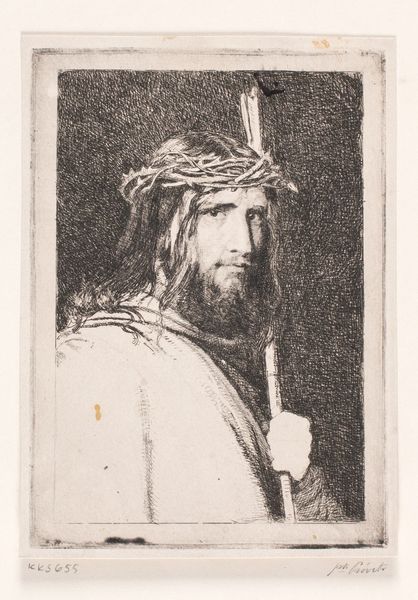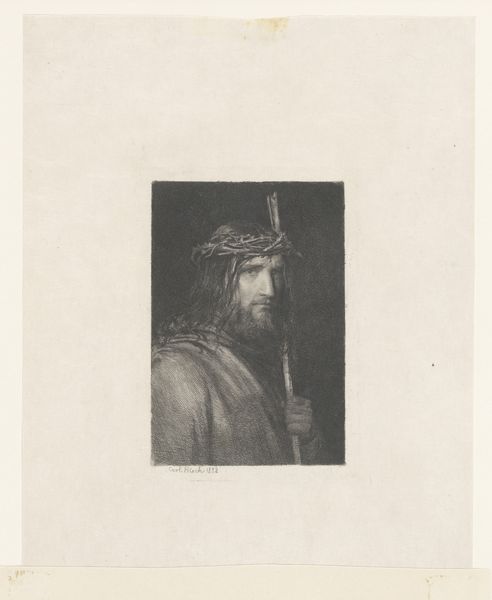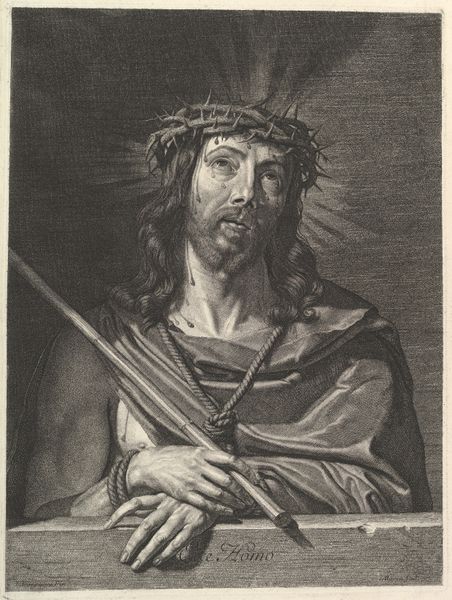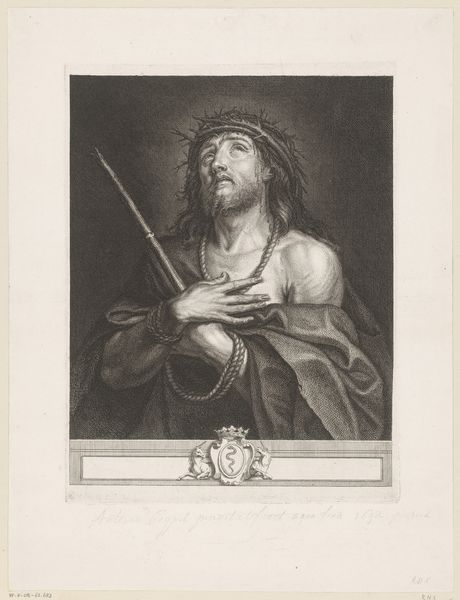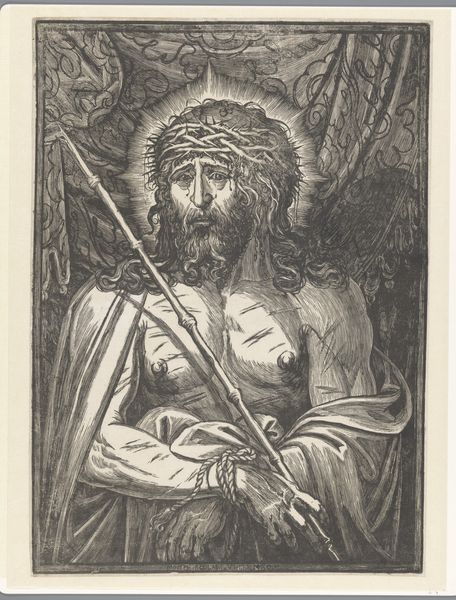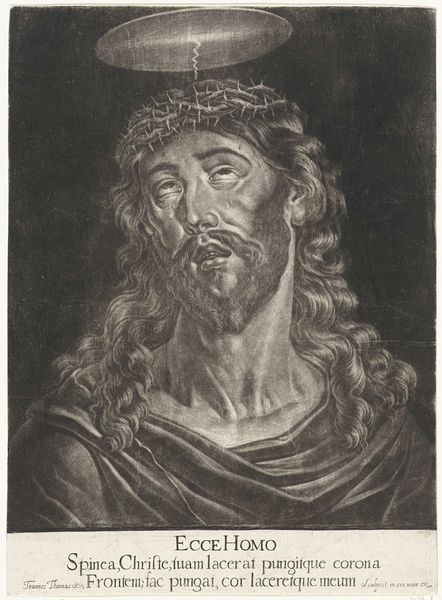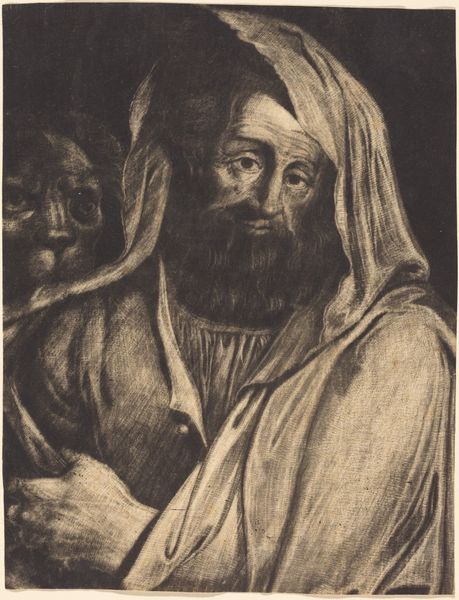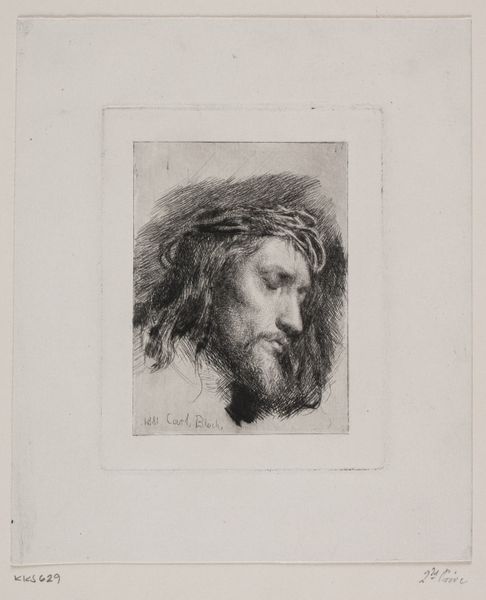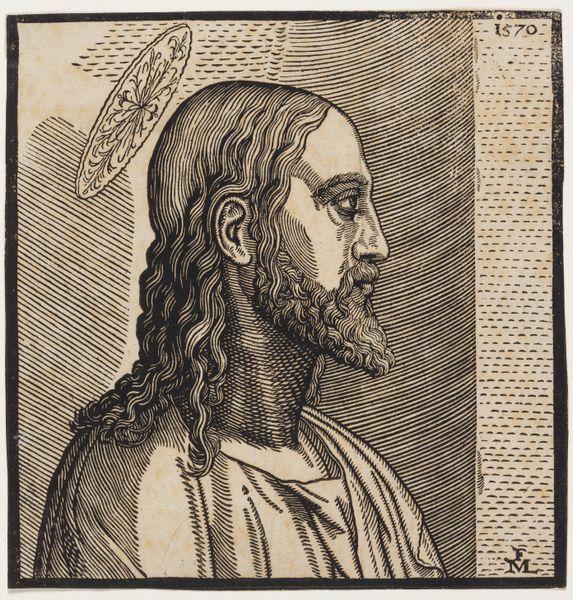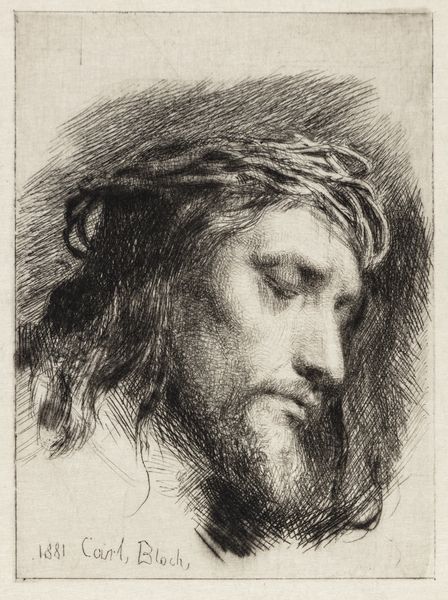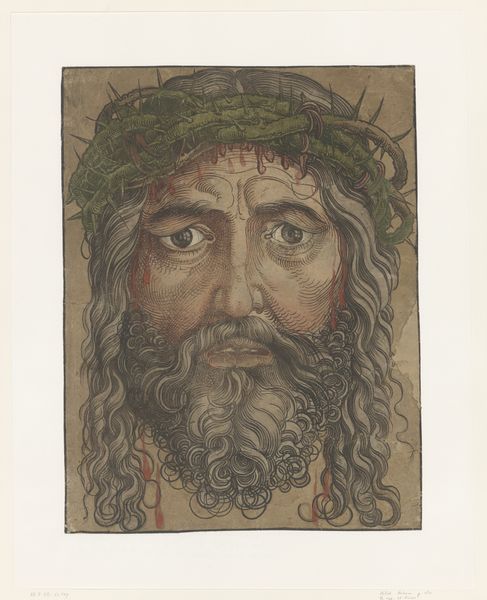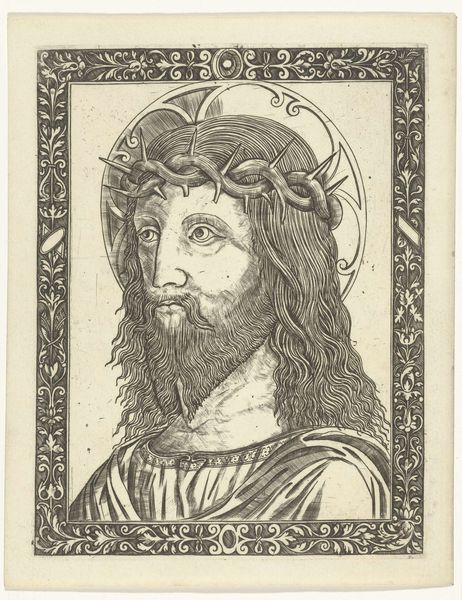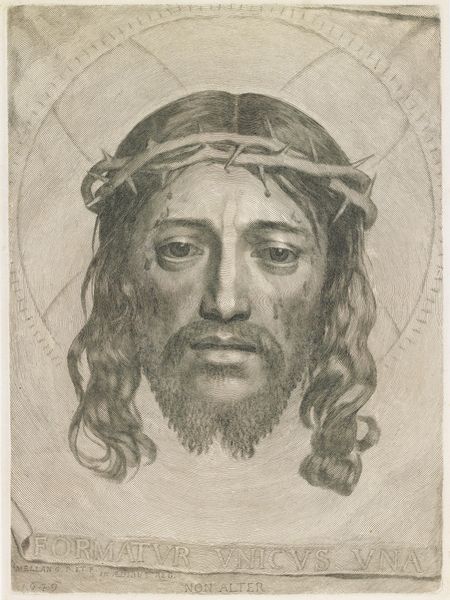
print, etching
#
portrait
# print
#
etching
#
figuration
#
history-painting
#
realism
Dimensions: 180 mm (height) x 143 mm (width) (bladmaal), 139 mm (height) x 101 mm (width) (plademaal)
Editor: So, here we have Carl Bloch's "Christ with a Crown of Thorns," an etching from 1882 held at the SMK in Copenhagen. The mood is undeniably somber; you can feel the weight of suffering just radiating from Christ’s expression. What do you see in this piece, looking at it from your perspective? Curator: Well, the 19th century witnessed a surge in religious art with a very distinct social function. Bloch, a Danish artist, produced this piece in a period where religious imagery was deployed to reinforce certain moral codes, and bolster institutional authority. Consider the market for these kinds of images – where would you imagine this etching would circulate? Editor: Possibly amongst religious families or in educational settings? To sort of, you know, reinforce faith and…obedience, maybe? Curator: Precisely. And consider the visual language Bloch employs. It is Realism but idealized – the pathos of Christ is rendered with striking clarity. He's presented not as divine royalty, but as a relatable figure of human suffering. This strategy made the figure more approachable, more relatable, furthering that reinforcement role that we talked about. Why an etching, and not painting? Editor: Cost, I imagine? Prints allow for wider distribution and accessibility, making the message more democratic. But, were there any dissenting voices against this deployment of religious imagery? Curator: Definitely. Critiques often centered around the manipulation of religious feelings for social control, questioning the authority implied by these portrayals. Some critics found them saccharine and overly sentimental. I wonder if those critics had a point here. What about you? Editor: It’s interesting to think about how something so seemingly pious could be used, and critiqued, as a tool for social control. I’ll definitely be approaching religious art with a more critical eye from now on! Curator: Absolutely. By questioning the social and historical context, we can understand art’s active role in shaping beliefs.
Comments
No comments
Be the first to comment and join the conversation on the ultimate creative platform.
